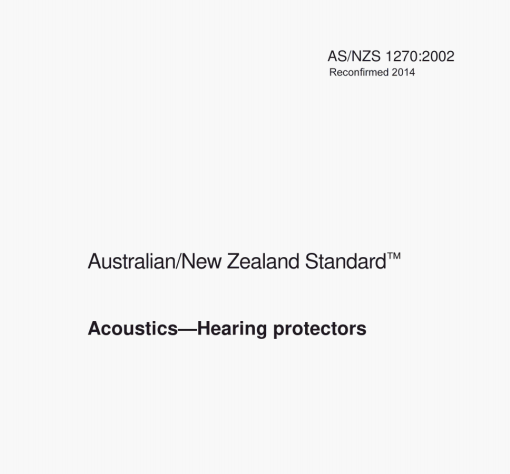AS/NZS 1270:2002 pdf – Acoustics—Hearing protectors.
A smooth steel plate at least 10 mm thick affixed to a vertical wall with bitilar suspension of the device under test shall be used as shown in Figure 3.3. The bifilar suspension shall have an effective length of 1.0 metres with the separation of the wires approximately equal to the length of the helmet. See Figure 3.3.
The earmuffs shall be set to the in-use position on the helmet and the cups/support arms length to their maximum. and placed in the test chamber for at least 4 hours. The helmet mounted earmuffs shall then he removed from the chamber and within I) seconds, the following completed:
(a) Clamp the bifilar suspension to the front and rear apex of the helmet shell, adjusting the plane of symmetry of the suspended helmet mounted earmuffs parallel to the steel place. Suspend the combination so that the helmet is inverted and horizontal and so that the lowest point of the crown of the helmet is 1000 ±10mm below the suspension line.
(h) Lift the helmet mounted earmuffs so that the hifilar suspension is taut and lying in a horizontal plane and then drop the combination once onto the steel plate and note whether any part of the earmuffs (except for replaceable cushions) has cracked or has become detached.
NOTES:
1 It may he necessary to remove the cushions and/or liners to examine the earmuffs and then replace them.
2 If any part of the earmuffs becomes detached, it should be reassembled and the testing scheme continued, provided that correct re.assembly can be performed without the use of either a tool or a replacement part.
This Section specifies a laboratory-based real-ear subjective method for determining the sound attenuation of hearing protectors.
The method is designed to estimate the sound attenuation obtainable by informed users in workplaces with well managed and well supervised hearing protection programs.
The method yields data which are collected at low sound pressure levels but which, with iwo exceptions, are also representative of the attenuation of hearing protectors at higher sound pressure levels. The exceptions are as follows:
(a) The attenuation provided by amplitude-sensitive hearing protectors at sound pressure levels at which their amplitude-sensitive characteristics become effective. The attenuation of such devices is designed to increase at high sound pressure levels hut the method specified in this Standard is not suitable for measuring this effect.
(b) The attenuation provided by hearing protectors to high-level impulse sounds, such as those generated by weapons, for which there are at present no standard test methods.
At frequencies below 50() Hi real-car attenuation data measured according to this Standard may he spuriously high by a few decibels, with the error increasing as the frequency decreases. The error results from masking of the occluded-ear threshold by physiological noise during testing. The error is largest for semi-insert devices, small-volume earmuffs and shallowly inserted earplugs. The error is smallest for large-volume earmuffs and deeply inserted earplugs.
4.2 PHYSICAL REQUIREMENTS OF THE TEST FACILITY
4.2.1 Test signals
Test signals shall consist of one-third octave hands of noise filtered from a pink noise source. The hands shall have the centre frequencies shown in Table 4.1.
AS/NZS 1270:2002 pdf – Acoustics—Hearing protectors
